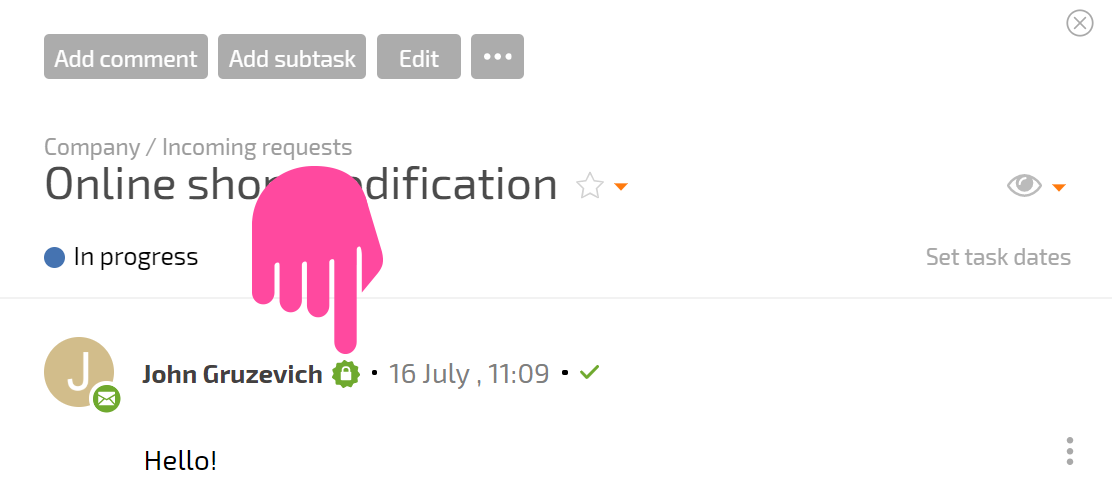DKIM signatures
DKIM (DomainKeys Identified Mail) technology detects counterfeit email addresses and helps fight against spam and theft of personal information such as usernames, passwords, and more.
DKIM adds a digital signature to emails. When it's used, mail providers, such as Gmail, Mail.ru, and Planfix, can verify that an email was actually sent from the domain shown.
In Planfix, DKIM signatures are shown with a special icon:

Green icon  — the email has a DKIM signature; when you hover your mouse over the icon, the signature appears, and you can see which domain signed the email.
— the email has a DKIM signature; when you hover your mouse over the icon, the signature appears, and you can see which domain signed the email.
Red icon  — the email does not have a signature. The following are possible:
— the email does not have a signature. The following are possible:
- the sender's mail server doesn't have a DKIM signature configured;
- the sender changed something in their settings and the email was sent without a signature;
- the email was not actually sent from the sender indicated, but from someone else;
- the signature was lost in the delivery process — this happens, for example, when an email is forwarded.
If you see a red icon, we recommend that you make sure that the email was definitely sent by the sender. This is critical if the email contains a request for a transfer of funds or if it has unknown files attached. Special attention should be given to cases where the email lacks a DKIM signature but was sent from a popular email service, such as Gmail, Mail.ru, or Yandex since this is most likely a scam.
If you receive an email from a domain that you trust, such as the domain you use, a red icon does not necessarily mean that the email is suspicious. It could be that the postmaster has not configured DKIM signatures for emails.
